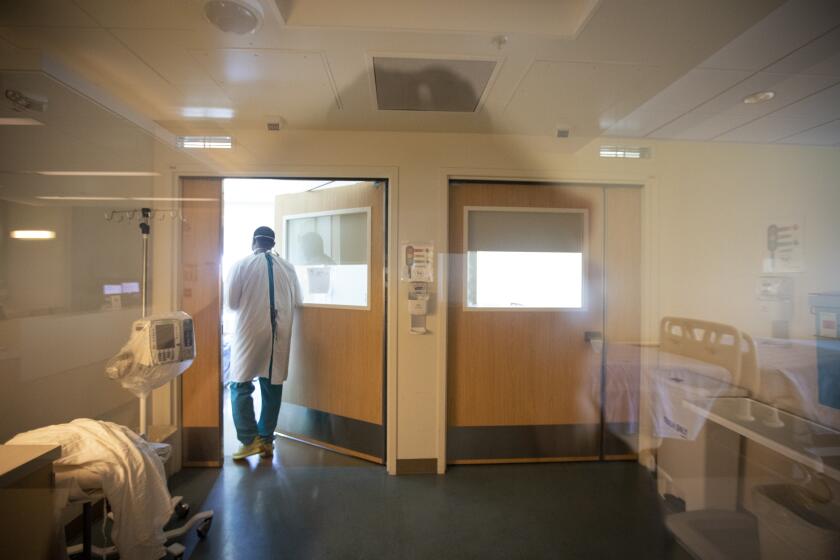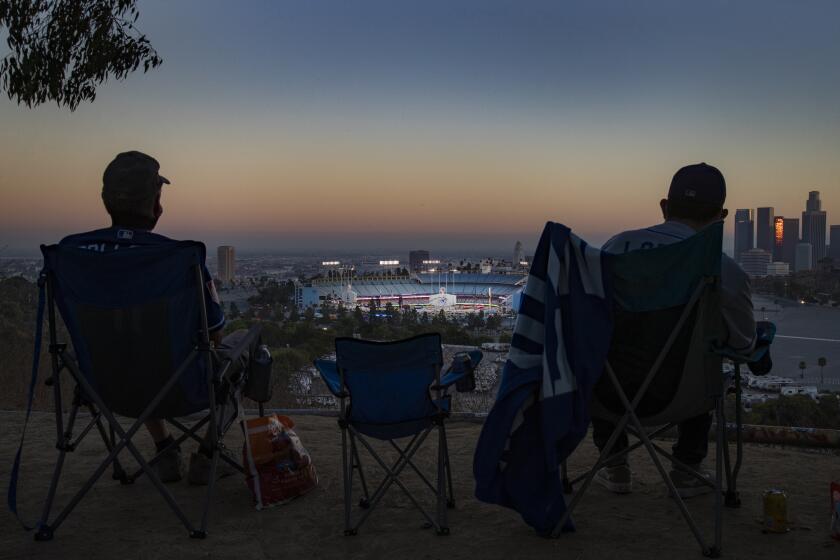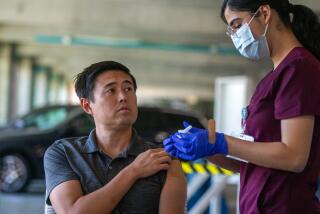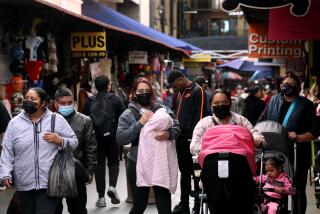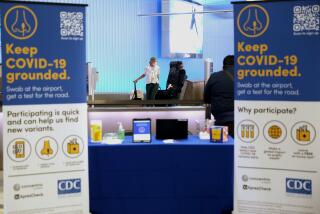After record-high deaths, COVID-19 hospitalizations decline in Inland Empire

- Share via
Following a statewide trend, the number of those hospitalized with COVID-19 in the Inland Empire has dipped after record-setting data were reported last month.
In Riverside County — which has surpassed 40,000 cases — the COVID-19 death toll reached 820 Monday after public health officials reported 21 additional deaths. The county also reported that 359 people with confirmed cases of COVID-19 were hospitalized, including 112 in intensive care.
Those numbers are significantly down from the record-high hospitalizations nearly a month ago; 536 people were hospitalized on July 15, and 136 were in ICUs.
Nearby San Bernardino County has seen a similar pattern. On Saturday, the county reported that 485 people were hospitalized, including 69 in intensive care. While the total number of hospitalizations dropped, the number of ICU patients increased by 15% from the previous day.
Still, those numbers are a far cry from the records set a month ago, when more than 600 people were hospitalized and nearly a third were in ICUs.
The drop in hospitalizations comes on the heels of a bleak milestone in the pandemic for California — 10,000 deaths from the virus — as well as reports that the state’s system for tallying the number of cases had failed to log 250,000 to 300,000 results into the database.
As COVID-19 cases surge, patients in Los Angeles are dying at a lower rate. Plus, more headlines from across California.
Last Monday, 42 deaths were reported in Riverside County, the highest single-day death toll since the pandemic began, according to the Los Angeles Times coronavirus tracker. In San Bernardino — which has reported more than 35,700 infections and 546 deaths — health officials reported 59 fatalities Tuesday, the highest daily death count to date.
Numbers — including cases and hospitalizations — reported on any given day reflect activity from roughly two weeks prior, so it is possible the decline in hospitalizations is linked to the state’s reinstatement of shutdown orders in mid-July after a surge in infections.
But the trend is also due in part to younger people falling sick, as well as better control over the disease’s spread in high-risk settings, such as nursing homes.
Second wave of coronavirus has businesses and the public moving from indoors to the great outdoors
Younger adults now account for the majority of coronavirus cases in California. In San Bernardino County, more than one-quarter of COVID-19 infections are among those ages 20 to 29: more than 8,280 cases. Those ages 30 to 39 make up more than 6,950 cases. And in Riverside County, 20- to 39-year-olds account for more than 17,000 infections — 42% of overall infections.
Both counties are currently on the state’s watch list, which is monitoring at least 38 counties for surges in the number of COVID-19 cases and hospitalizations. That list was frozen last week after health officials announced the technical issues with the state’s electronic reporting system.
California Health and Human Services Director Dr. Mark Ghaly said Friday he did not think the missing information would affect the statewide trend toward a decline in cases, but it was unclear how many total positive cases were undercounted and whether any counties were particularly affected by the loss in data.
More to Read
Sign up for Essential California
The most important California stories and recommendations in your inbox every morning.
You may occasionally receive promotional content from the Los Angeles Times.
